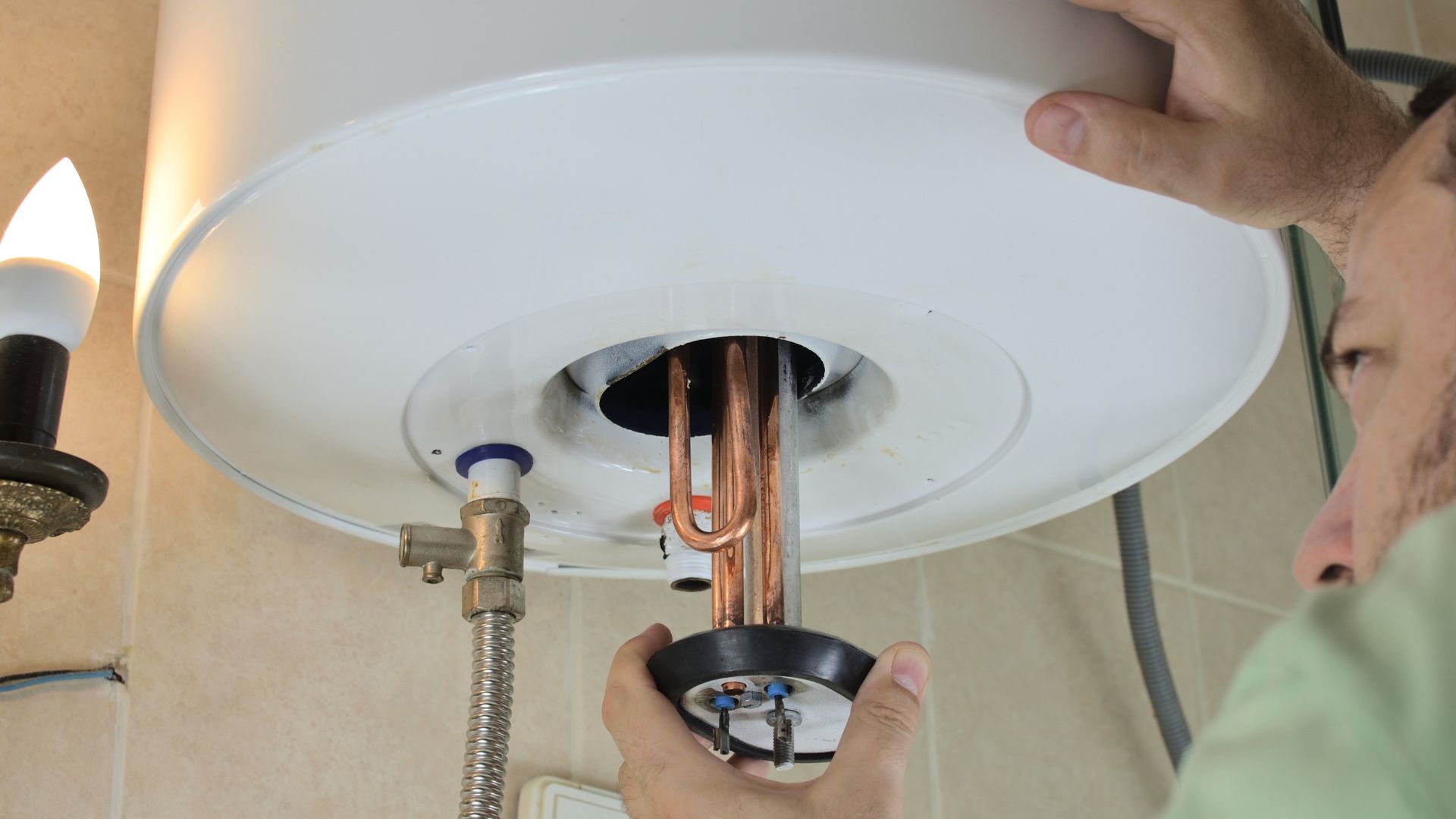How to Maintain a Hot Water System
Around 15% to 30% of the average Australian household’s energy use goes to heating water. (Energy.gov.au)
Hot water systems are the unsung heroes of daily life, powering everything from morning showers to after-dinner dishwashing. But when they’re overlooked? That’s when the trouble starts. Rusty tanks, high bills, freezing water, and unexpected repair costs can sneak up fast.
This blog aims to walk you through some straightforward but crucial maintenance tips that help keep your system running efficiently and safely. With a few regular checks and habits, you can reduce the risk of breakdowns and extend the life of your hot water unit, without breaking a sweat.
Know Your System: Types of Hot Water Units
First up, get to know what’s in your laundry or backyard. There are four main types of hot water systems, and understanding yours makes all the difference:
- Electric systems are easy to install and widely used, but they do cost more to run over time.
- Gas systems heat quickly and are efficient if you’re connected to natural gas.
- Solar hot water systems use roof-mounted panels and a storage tank—great for sunny areas and long-term savings.
- Heat pump systems work like reverse fridges, pulling warmth from the air to heat your water.

Each unit type has different quirks, lifespans, and maintenance needs. For example, solar systems might need panel cleaning, while gas ones need occasional burner servicing.
Knowing your system type helps you follow the right maintenance process, stay safe, and avoid expensive mishaps. Not sure what you have? Check the label or manual, or ask a licensed plumber for help.
Regular Checks You Shouldn’t Skip
You don’t need to be a plumbing pro to do these checks—they’re quick, simple, and can prevent big problems.
Temperature and Pressure Relief Valve (TPR): This valve prevents dangerous pressure build-up. Test it every six months by gently lifting the lever—water should flow out. If nothing happens or it leaks constantly, it needs replacing.
Water Pressure: High pressure can wear out your system faster and cause leaks. If you hear banging in the pipes or see constant dripping from the valve, it’s worth getting it checked by a plumber.
Sediment Buildup: Minerals from hard water settle at the bottom of your tank, reducing heating efficiency. You may notice popping or banging noises—clear signs it’s time for a flush.
Leaks and Rust: Every few months, take a few minutes to look over the tank. Watch for rust, water stains, or any drips from the valves or pipes.
Unusual Smells or Noises: A rotten egg smell could mean bacteria in the tank. A gurgling sound? That’s probably sediment doing its thing.
Catching these small signs early can prevent costly surprises later.
Flushing the Tank: A Step Too Often Missed
Many homeowners don’t realise their hot water tank needs flushing—until it’s too late.
Over time, sediment builds up at the bottom of the tank. This not only makes the system work harder (costing you more in electricity or gas) but can also lead to rusting from the inside out.

Flushing your tank once a year helps clear out mineral buildup, prevent corrosion, and keep the water heater running efficiently. If you have hard water or a large household, doing it every six months might be even better.
Here’s how it works:
- Turn off the electricity or gas supply.
- Let the water cool down.
- Connect a hose to the drain valve and let the tank empty.
- Open the cold water inlet to stir up remaining sediment and flush it out.
- Close the valves, remove the hose, and refill the tank.
If DIY isn’t your thing, this is a quick job for any qualified plumber.
Keep It Warm, Not Scalding
A common mistake? Cranking the thermostat up way too high.
Your hot water thermostat should be set to around 60°C. This helps prevent the growth of bacteria like Legionella but still keeps energy usage in check.
Any hotter, and you’re just asking for higher energy bills—and scald risks. Plus, excessive heat can damage the system’s internal components over time.
For families with young kids or elderly members, it’s worth installing tempering valves or anti-scald devices at the tap.These regulate the water temperature where it matters most, offering peace of mind.
Adjusting your thermostat only takes a minute and can go a long way toward keeping your system running safely and efficiently.
Anode Rod: The Unsung Hero of Tank Longevity
Tucked away inside your tank is a metal rod doing some heavy lifting—quietly fighting off rust every single day.
This anode rod is designed to corrode instead of your tank walls. Over time, it wears down and stops doing its job. If left unchecked, your tank begins to corrode from the inside, often without warning.
Signs your anode rod may need replacing:
- Metallic taste in your water
- Reddish or brown-tinted water
- Drop in water quality
- Visible corrosion on the rod during inspection
Plumbers recommend checking the rod every 3–5 years, depending on water quality and usage. Replacing it is far more affordable than buying a brand-new hot water system.
A small part, yes—but one that plays a huge role in your system’s longevity.
When to Call in a Pro: Knowing Your Limits
Some hot water maintenance tasks are best left to the pros, and there’s no shame in that.
You can (and should) test valves, inspect for leaks, and monitor performance. But when it comes to electrical parts, gas connections, or anything involving tools you’ve never used, step aside.

Licensed plumbers have the tools and training to handle complex issues without voiding warranties or creating safety risks.
Plus, a professional service at least every two years can catch problems that you wouldn’t spot on your own, like minor corrosion, weak valves, or early signs of system fatigue.
DIY has its place, but so does expert support. It’s about knowing your limits—and protecting your investment.
Eco & Cost Benefits of Regular Maintenance
Regular hot water system maintenance isn’t just about saving yourself a cold shower—it’s a smart move for your wallet and the environment.
A well-maintained system runs more efficiently, using less energy to heat your water. That means lower power bills and fewer emissions. You’re reducing your household’s carbon footprint and doing your bit for the planet.
Plus, you’ll squeeze more years out of your unit. That means less manufacturing waste, fewer systems in landfills, and more money staying in your pocket.
Want to make it easy? Set a calendar reminder or jot a quick note on your phone. Even keeping a basic log can help you stay on top of things.
Little actions, big impact—maintenance pays off in more ways than one.
Need a Hand with Your System? Call the Hot Water Experts
Let’s face it—life’s too short for cold showers, strange tank noises, or stress over surprise plumbing bills.
If you’re not sure how to flush your tank, suspect your anode rod’s on its last legs, or just want the peace of mind that comes with expert servicing, we’ve got your back.
At Silver Drains, we know hot water systems inside and out. Our licensed plumbers can service all types—electric, gas, solar, and heat pump—with minimal fuss and maximum efficiency.
We offer reliable repairs, new system installations, and tailored maintenance to suit your household’s needs. No guesswork, no shortcuts—just hot water that works when you need it most.
So if you’ve spotted a leak, can’t remember the last time your system was serviced, or just want it running at its best, get in touch today.
Let’s keep the hot water flowing without the drama.





